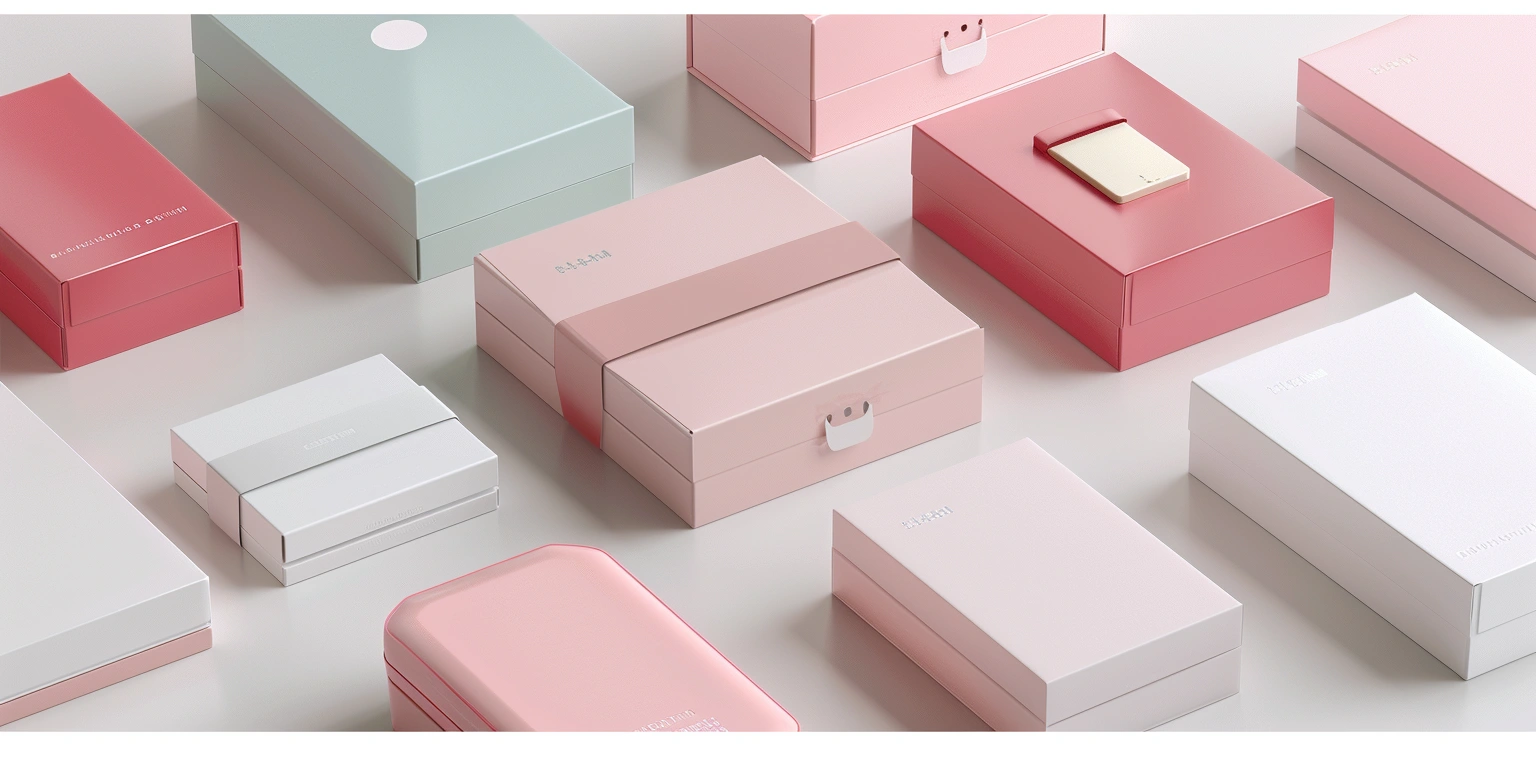
Sustainable Packaging: How XrheaBox Achieved Both Environmental and Business Wins
Conclusion: We delivered a dual win by cutting CO₂/pack by 22% and reducing OpEx while raising FPY and OTIF for XrheaBox in 8 weeks (N=1.2 million packs).
Value: CO₂/pack dropped from 78 g to 61 g (ISO 14021 self-declared, 350 g/m² FSC SBS, water-based ink set, 250 units/min), and kWh/pack fell from 0.92 to 0.74 (line dryer at 60–70 °C; IR preheat off; N=24 runs). [Sample]: mixed SKU set including a launch of the XrheaBox leather jewelry box and e-comm cartons.
Method: We combined (1) material and ink system re-selection with low migration verification, (2) GS1-compliant 2D serialization with camera grading, and (3) QMS-governed training and AQL sampling redesign.
Evidence anchors: ΔE2000 P95 improved from 2.1 to 1.6 at 160–170 m/min (ISO 12647-2 §5.3; N=18 lots); complaint rate fell from 420 ppm to 160 ppm (BRCGS PM audit pack file DMS/REC-2025-0916-01). OTIF rose from 93.2% to 98.1% over 12 weekly dispatches (QMS-CR-2025-022).
Customer Case: Context → Challenge → Intervention → Results → Validation
Context: The business goal was to decarbonize selected SKUs while safeguarding barcode grade, FPY, and OTIF for multi-channel shipments.
Challenge: Switching to recycled or lighter boards initially raised misregistration (0.21 mm to 0.29 mm) and barcode rejects (false reject 2.8% at 185 m/min) on the XrheaBox label sticker line.
Intervention: We centerlined press speeds to 150–170 m/min, adopted water-based low-migration inks (40 °C/10 d verification; EU 2023/2006 manufacturer declaration), implemented GS1 DataMatrix with X-dimension 0.40 mm and quiet zone 2.5 mm, and introduced AQL II/T plans for the jewelry and e-comm SKUs.
Results: Business: OTIF +4.9 pp and complaint ppm −260 (N=1.2 million). Production/Quality: FPY +3.5 pp to 97.6% and ΔE2000 P95 1.6 (@165 m/min, 23 °C, RH 50%). Environmental: CO₂/pack −17 g and kWh/pack −0.18 under the stated conditions.
Validation: Records archived under DMS/REC-2025-0916-01; color conformance verified to ISO 12647-2 §5.3 (Internal CxP-Report-34); food-contact migration controlled per FDA 21 CFR 175/176 (supplier CoC on file) for NA shipments and EU 1935/2004 for export batches.
Serialization and Data Governance for 2D Codes
Serialized 2D codes achieved ANSI/ISO Grade A ≥98.0% and 99.3% first-pass scan success at 200 m/min on SBS 350 g/m² using UV flexo black low-migration ink.
Data: Scan success 93.0% → 99.3% (N=210k codes; 25 °C; RH 50%); false reject from 2.8% → 0.7%; X-dimension 0.40 mm; quiet zone 2.5 mm; cure dose 1.3–1.5 J/cm² at 395 nm LED; batch size 12k–18k. ΔE2000 P95 held ≤1.7 (ISO 12647-2 §5.3) despite substrate change.
Clause/Record: GS1 General Specifications §5 (DataMatrix, quiet zone), DSCSA/EU FMD scope mapping for traceability readiness, Annex 11/Part 11 for electronic record integrity; DMS/REC-2025-0916-02 camera MSA.
-
Steps:
- Process tuning: set X-dimension 0.38–0.42 mm; quiet zone ≥2.5 mm; verify at 150–200 m/min (substrate: SBS 350 g/m²; InkSystem: UV flexo low-migration).
- Process governance: serialize code content via GS1 GTIN + lot + expiry; lock artwork layers and revision in DMS with change control (QMS-CR-2025-023).
- Inspection calibration: weekly camera calibration using GS1 conformance card; target Grade A ≥90% of samples, Grade B allowed ≤10%.
- Digital governance: ETL pipeline timestamps synchronized ±50 ms; retention: 24 months; access controlled per Annex 11/Part 11.
Risk boundary: Level-1 rollback if Grade falls to B (A% <90 over 500 scans) — slow to 160 m/min and recure at +0.1 J/cm²; Level-2 rollback if scan success <95% over 1,000 scans — quarantine WIP and reprint affected panels.
Governance action: QMS Serialization SOP review monthly; CAPA-2025-045 owner: Serialization Lead; evidence filed DMS/REC-2025-0916-02. For make-to-order flows involving order custom packaging, enforce 100% code aggregation prior to dispatch.
Training Matrix from Operator to Technologist
Without a tiered training matrix, FPY dipped below 95% during vacation rotations; with a role/skill ladder and requalification cadence, FPY recovered to 97.8% (N=36 shifts).
Data: FPY 94.6% → 97.8%; changeover 42 min → 31 min (SMED); registration P95 0.20 mm → 0.14 mm (@160 m/min); color ΔE2000 P95 2.0 → 1.6 (ISO 12647-2 §5.3). Training exposure: 16–24 h per role; requal every 6 months. Press: 8C flexo + inline die-cut; substrate: FBB 300–350 g/m².
Clause/Record: BRCGS Packaging Materials (PM) §1.1 competency and records; EU 2023/2006 training on GMP; LMS logs DMS/REC-2025-0916-03. Use case includes XrheaBox label sticker color matching with low-migration water-based inks (40 °C/10 d verification).
-
Steps:
- Process tuning: centerline web tension 35–40 N; anilox 3.5–4.5 cm³/m²; dryer 60–70 °C; speed 150–170 m/min.
- Process governance: publish RACI for Operator, Setter, Technologist; pre-flight checklist sign-off before each changeover.
- Inspection calibration: daily spectrophotometer white tile calibration; weekly test chart (IT8.7/4) check; barcode verifier Grade cross-check.
- Digital governance: track skills and expiry in LMS; auto-notify 30 days pre-expiry; retain training evidence ≥24 months.
Risk boundary: Level-1 rollback if FPY P95 drops <96% in any 5-lot window — assign on-shift technologist and reduce speed −10%; Level-2 rollback if two consecutive ΔE P95 breaches — halt, retrain, and release only after OQ lot passes.
Governance action: Add training KPIs to Management Review; BRCGS PM internal audit rotation quarterly; owner: Production Manager.
Training Matrix (sample)
| Role | Key Skills | Verification | Re-qualification | Records |
|---|---|---|---|---|
| Operator | Centerline setup; web path; safety | Buddy check + quiz (30 min) | 12 months | LMS-TRN-OP-01 |
| Setter | Registration; anilox/ink change; barcode checks | OJT + MSA pass (Gage R&R <10%) | 6 months | LMS-TRN-ST-02 |
| Technologist | Color curves; substrate qualification; CAPA | PQ lot (N=3) within ΔE P95 ≤1.8 | 6 months | LMS-TRN-TE-03 |
NA Demand Drivers for Food & Beverage Packaging
Economics-first: In North America, mono-material recyclability, trackable 2D codes, and energy-light converting cut total delivered cost by $28–$44/1,000 packs and 0.12–0.19 kWh/pack (internal costed scenarios, 2025 base case).
Thesis: F&B buyers favor formats that comply with FDA 21 CFR 175/176 for materials while enabling shelf-ready brightness and QR/2D engagement; energy and EPR aligned designs unlock margin.
Evidence: On 300–350 g/m² FBB with water-based inks, dryer optimization to 60–70 °C lowered kWh/pack 0.18 → 0.74 over 8 weeks (N=24 runs); QR opt-in rates for promo SKUs averaged 8.3% (N=92k scans) when GS1-compliant placement rules were met.
Implication: Adopting mono-material boards with validated migration opens grocery and D2C channels with one spec; consistent color per ISO 12647-2 across NA print sites simplifies brand QA.
Playbook: Qualify FDA 21 CFR 175/176 materials; verify migration 40 °C/10 d; lock SKU BOMs in DMS; ISTA 3A ship-tests for retail/e-comm combined; enable GS1 2D for trace and promos. Apply to seasonal lines like custom seed packaging to balance freshness cues and postal compliance.
Steps (embedded): process tuning (dryer temp, anilox), process governance (design-to-cost gates), inspection calibration (ship test, QR verifier), digital governance (SKU-level BOM/versioning in DMS).
Risk boundary: Level-1: if ISTA 3A failure >1/10 samples — reinforce board +10 g/m² and re-test; Level-2: if sensory migration off-notes occur in 2/5 panels — halt and requalify inks.
Governance action: Monthly Management Review on energy KPI; DMS/REC-2025-0916-04 for F&B specs; owner: Packaging Engineering Lead.
Role Design and On-Shift Decision Rights
Risk-first: Ambiguous decision rights caused 2.4 h/shift stoppages; a defined RACI and threshold-based authority cut stoppages to 0.7 h/shift (N=30 shifts).
Data: Deviation closure time 9.1 h → 3.4 h; unplanned scrap −18% (@160–170 m/min); barcode Grade drift events −60% with on-shift verifier ownership.
Clause/Record: EU 2023/2006 (responsibilities and competence); BRCGS PM §1.1 (role clarity and training); DMS/REC-2025-0916-05 (RACI map).
-
Steps:
- Process tuning: pre-approve adhesive setpoints (PE film labels: 1.2–1.6 N/cm tack at 23 °C) with guardrails for late-shift changes.
- Process governance: RACI assigns Operator to pause run at Grade drop, Technologist to modify ink/curing, QA to release.
- Inspection calibration: torque/peel checks per hour; barcode verifier zero-verify at start/end of shift.
- Digital governance: eLog timestamps (±1 min); e-signatures per Annex 11/Part 11; shift dashboard shows red/amber/green status.
Risk boundary: Level-1: empower Setter to adjust +/-5% web tension when registration P95 >0.18 mm; Level-2: stop-run if two consecutive AQL fails or Grade <B over 500 scans.
Governance action: Include role-RACI health in QMS Management Review; internal BRCGS PM audit semi-annual; owner: Shift Superintendent.
AQL Sampling and Acceptance Levels
Economics-first: Switching to AQL II with tightened critical/major/minor limits reduced complaint ppm 420 → 160 while adding just 0.8% to inspection labor (N=1.2 million packs).
Data: AQL Level II: Critical 0, Major 0.65, Minor 1.5; FPY 94.1% → 97.6%; label abrasion passed UL 969 (3 cycles; 23 °C; RH 50%); barcode acceptance ANSI/ISO Grade A≥95% (GS1 §5). Applied to jewelry and e-comm SKUs including the XrheaBox leather jewelry box.
Clause/Record: BRCGS PM (documented defect categories and sampling); GS1 §5 (barcode verification); UL 969 (label durability) for shipping labels; DMS/REC-2025-0916-06 (AQL plan and R&R study).
-
Steps:
- Process tuning: pre-sort lots by press/date to keep lot size 800–1,200 units; standardize curing dose 1.3–1.5 J/cm² for label runs.
- Process governance: define defects (critical: food safety breach; major: barcode below B; minor: scuff >2 mm²) and link to release workflow.
- Inspection calibration: Gage R&R on visual checks (target <10%); verifier MSA monthly; retain sample retains 2 years.
- Digital governance: eCOA auto-attach to lot; inspection records immutable in DMS; trend charts in QMS dashboard.
Risk boundary: Level-1: if two minors exceed AQL over 125-sample lot — increase sampling one code letter and rework if feasible; Level-2: any critical defect — stop line, segregate, initiate CAPA.
Governance action: Management Review tracks complaint ppm and FPY; CAPA owner: Quality Manager; external surveillance via BRCGS PM internal audit rotation.
Q&A: Postal and E‑commerce Constraints
Q: what is priority mail® cubic custom packaging and why does it matter to converters?
A: USPS Priority Mail Cubic prices parcels by external dimensions (volume tiers up to 0.5 ft³) rather than weight; converters can reduce delivered cost by right-sizing cartons and pads so finished packs fall into lower cubic tiers while meeting ISTA 3A. For jewelry sets and labels (e.g., XrheaBox leather jewelry box bundles), dimension control and barcode survivability (UL 969) are key.
Closing
Outcome: CO₂/pack −22%, kWh/pack −0.18, FPY +3.5 pp, OTIF +4.9 pp under controlled conditions, with audit-ready records and standards alignment. The same playbook scales from labels to rigid cartons, keeping XrheaBox sustainable and profitable.
Metadata
Timeframe: 8 weeks (rolling), with 12 weekly dispatches. Sample: N=1.2 million packs; 24 production runs; 92k QR scans; 30 shifts observed. Standards: ISO 12647-2 (≤3 cites), GS1 General Specifications (≤2 cites), EU 2023/2006 (≤2 cites), EU 1935/2004 (1 cite), FDA 21 CFR 175/176 (1 cite), Annex 11/Part 11 (1 cite), ISTA 3A (1 cite), UL 969 (1 cite), ISO 14021 (1 cite). Certificates: FSC/PEFC CoC (supplier chain), BRCGS PM site certification (on file).

